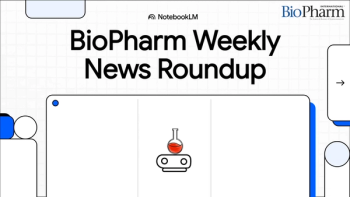
Novexin Receives New Funding for Development of Carbohydrate Polymers for Protein Processing
Novexin (Cambridge, UK, www.novexin.com) has received an additional ?200,000 grant from the UK Department of Trade and Industry (DTI) to continue development of its carbohydrate polymers to enhance the solubility and stability of proteins in solution.
Novexin (Cambridge, UK,
The carbohydrate polymers, called “NVoy,” form reversible complexes with proteins, without altering protein structure, to reduce protein aggregation and keep proteins stable for analysis. The molecules are linear, uncharged, carbohydrate polymers, about 5 kDa in size, that have been derivatized to make them amphipathic.
“This is a large, very flexible polymer that binds to the surface-exposed hydrophobicity of the protein,” says Dan Jones, PhD, Chief Scientific Officer of Novexin. “By capping that off, you eliminate one of the main sources of aggregation.”
Although the polymer has a hydrophobic face that binds with the hydrophobic sections of a protein, the rest of the molecule is still hydrophilic, so it remains soluble. The interaction between polymer and protein is reversible and controllable, which makes it easy to separate the carbohydrate at a later stage using standard purification techniques, Jones says. “A good example would be to bind the protein on an ion-exchange column, wash with buffer to remove the polymer, and then elute the protein in a buffer that doesn’t contain the carbohydrate polymer,” he says. “It would be as simple as that.”
Doesn’t interfere with analytical processes
One of the advantages of this technology is that, unlike many of the alternatives, the carbohydrate polymer does not interfere with many analytical processes. “That’s where it’s really good, because you can still run all the analyticals,” says Heikki Lanckriet, PhD, Chief Operating Officer of Novexin. “Many other alternative protein stabilization techniques interfere with one or more protein analyticals. Say if you use arginine, you couldn’t run SDS PAGE gels or circular dichroism anymore, or if you use a detergent you would have serious problems with mass spectrometry analysis and protein crystallization.”
Most of Novexin’s customers are using the technology for protein research, but Jones says some customers are using it for large-scale operations. “We’ve had applications in purification for people who were not able to do purifications without incurring complete loss of the protein. So they are using our polymers to improve the recovery of active protein.”
The company received a first DTI award in 2004 and used this to develop a range of products that are now on the market; this second award is expected to help the company to develop the technology for expanded use. “Our ultimate aim is to create labeled polymers, so that you could add them at the beginning of your process and track them all the way through,” says Jones. “And ultimately, to add some kind of purification handle so that if you do want to guarantee you’ve got absolute, complete removal, that would be very easy to do as well.”
Newsletter
Stay at the forefront of biopharmaceutical innovation—subscribe to BioPharm International for expert insights on drug development, manufacturing, compliance, and more.





